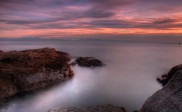Still Life Photography
Still life photography consists of arranging inanimate objects in order to create an image. It can be the evidence of great skill and creativity, as it requires from the photographer mastery of composition, lighting and comprehension of volumes, textures and colors. Still life photos aren’t usually about the objects they showcase, but rather about the way these objects are arranged and organized within the frame. Since the subject is inanimate, the photographer can take his/her time to try different light settings and compositions.
Constructing the Image:
Composition:

Photo By Yassine Hakimi
Some fruits, a few flowers, a glass, and you are good to go. Composing a still life photo can be an enriching experience. That’s because you have all the liberty to choose how to arrange the elements. You are limited only by your imagination. A good way to proceed is to begin by placing your main subject and then to go from there into constructing the image by adding other elements. Each element that you place will interact with the other objects in the composition through its shape, texture, color, size, etc. But, elements of a composition shouldn’t be chosen randomly. Try to choose a theme and to work on it by arranging objects that go together. For example, objects from the same epoch or objects from the same origin.
Another thing to keep in mind is the background. Find a background that is related to the theme you are working on, but keep in mind that it shouldn’t overpower your subject. The background should help in creating a harmonious composition. For example, if you are making a still life photo of objects from the 19th century, your composition will probably be more efficient if taken against a wooden background rather than a plastic one.
Once you put your main element against the background keep looking through the viewfinder every time you add a new element. Move the objects around, until you are satisfied with what you can see through the camera.
When composing your image, consider things like proportion and contrast between shadowed areas and highlights. Don’t put all your focus on the objects in the composition, as other elements such as shadows and colors that are cast by certain elements are very important as well.
As in any other kind of photography, the choice of a proper point of view is crucial in a still life composition. The appearance of the subject and its impact on the viewer can change considerably with the change of the angle of view. A regular point of view, i.e. a photo taken on the level of your subject, will render a photo that is faithful to reality. Shoot the same subject from a high angle and everything changes. This kind of point of view is suited when the aim is to draw attention to depth and volume in your composition.
Lighting:

Photo By geishaboy500
The distribution of light and shadows in a still life image plays a major role in creating the atmosphere you want to convey through the photo. Using artificial or natural light, you will be able to draw the viewer’s eye on the textures, lines and volumes.
Keep in mind that different objects will react differently to light. Darker objects tend to produce darker shadows. The type of lighting you should opt for depends on your subject and the effect you want to produce. If your composition contains several elements, it’s better to use a diffused lighting to avoid strong shadows that will hide the details of some elements, making the composition confusing. In order to get a result that is faithful to reality you can light your composition with a light source placed at 45° angle with a reflector placed at the opposite angle to lighten the shadows. You can also use the natural light that is reflected from a ceiling or a wall in a small location. These techniques of diffusing the light will produce an image with volumes that are easily discernable and shadows that are soft.
Using only one source of direct light can also give you some interesting results. Use one source of light to create shadows that will fill the gaps between the different elements of a composition. As the distance between the different elements is as important as the objects themselves, this kind of lighting will create shadows that will produce a visual continuity in the photo.
Found Still Life:

Photo By striatic
This kind of still life photography is different from the classic meaning of the term. This type of still life photos is usually found and not arranged by the photographer. Once you gain some experience and after lots of practice, you will be able to see still life opportunities everywhere you go. While, in a studio environment you have full control over the shot, it’s not the case with found objects. You are presented with an object in a specific environment and under a specific light. But, what you should do is proceed in the same logic as if you were at your studio. Find an interesting point of view and composition. Use the available light to capture the atmosphere around your subject. If the light is not optimal, use a reflective surface to reflect some light or you can use a flash.
If it’s possible and the object you found is that interesting, take it back home with you to try different compositions and light settings. After all, a still life photographer is a photo maker, not a photo taker.
The Bottom Line:

Photo By Yassine Hakimi
A still life composition can be simple or complex; it can be classic and affected or deal with a huge amount of objects without following any rules. But, in all the cases still life photography needs lots of time and thought. The success of the photo depends only on you. Everything is under your control. You are free to choose the objects you want to shoot, the camera, the lens, the point of view and the light. And, if you don’t like the final result, all you have to do is try again.
You may want to take a look at the following related posts:




